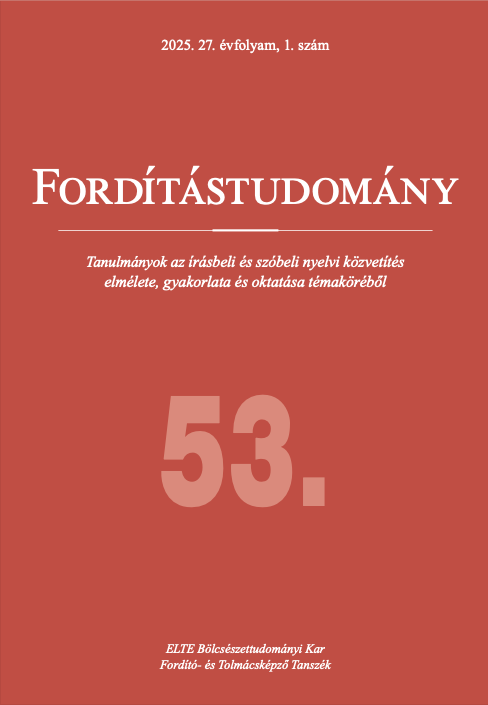The Place of Medical Interpreting within Community Interpreting
Abstract
Within the field of language mediation, the topic of community interpreting has gained increasing significance in interpreting research due to re- cent events such as the COVID-19 pandemic and the ongoing war in Ukraine. Community interpreting encompasses various sub-types, including judicial, legal, public service, and medical interpreting. This international and Hungarian literature review aims to assist researchers by situating medical interpreting within the broader category of community interpreting. The paper begins with an overview of community interpreting and seeks to clarify the terminology, as numerous terms exist for this form of interpretation in both English and Hungarian. Community interpreting may occur in settings such as police stations, immigration offices, social service centres, hospitals, clinics, schools, or other institutions where the interpreter facilitates communication between professionals—such as officials, healthcare workers, or social service providers—and laypersons, including clients, migrants, and patients. Following a review of international and Hungarian literature on community interpreting, the article discusses the competence models relevant to interpreters in this field. It provides a detailed examination of health interpreting and the competencies required of health interpreters, both internationally and in the Hungarian context. The literature review also addresses the question of who acts as a language mediator, as in community interpreting, and particularly in medical interpreting, this role is often filled by non-professionals, such as ad hoc interpreters, family members, or medical staff. Furthermore, the article explores the legal provisions applicable in Hungary and highlights the cur- rent situation of community interpreters both regionally and nationally. It compares the Hungarian context with practices in other European countries, specifically France and Denmark, examining whether interpretation services operate within an associative or a legal framework. Ultimately, this literature review aims to pro- vide researchers with a relevant and comprehensive summary of the various aspects of medical interpreting, interpreter roles, and related legal frameworks.
Copyright (c) 2025 Réka Rebeka Gabányi

This work is licensed under a Creative Commons Attribution-NonCommercial 4.0 International License.











1.png)
